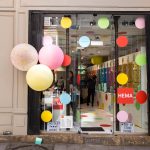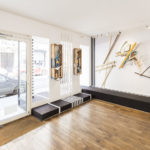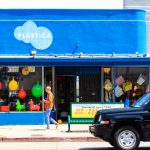The worth of something in our culture is often directly tied to the perceived notion of its expense. If it looks nice, it must’ve cost an arm and a leg, right? If it looks horrible, it must’ve been incredibly cheap. At our company, we’ve come to specialize in finding ways to shatter these misconceptions. Just because something has been cost-efficiently built within scope, doesn’t mean it can’t be perfect.
We’ve gained a lot of experience in handling signage for everyone from the NFL and Circle K, to smaller startups with growth needs. And with each project we’ve come to gain addition insight into how to efficiently make our client’s brand to look awesome, even if they don’t necessarily have thousands of dollars to spend on it.
Based on what we’ve learned, here are three tips that can help you in planning your next signage project or your soon to be successful Pop-Up Store.
1. The most expensive option is not always the best option. Often when you pay more for your signage, nine times out of ten, what you’re paying for is not necessarily the look of the product, but the longevity of the product’s material. For a temporary Pop-Up Store, sometimes it’s okay to go with materials that have a shorter lifespan. It’s all about spending money on what you need, while saving it on what you don’t. When we worked on providing signage for projects like the MLB All-Star game, or the Tostitos Fiesta Bowl, or the CMA Music Festival, we had to create innovative signage options that looked great while they were up, but that were only meant to last for a few days before being taken down and discarded. In these types of situations, purposely going with materials that had a shorter lifespan made by far the most sense in regard to signage options and also worked wonders in keeping the total production cost down for each event.
2. Sometimes it’s ok to be a passenger. It can be a bit overwhelming when you first venture into the world of pop-up stores. It’s important to remind yourself that you don’t necessarily have to know everything right out of the gate. It is however advised that you find trusted partners who can play the role of the expert on your behalf. You don’t have to go at it alone, and teaming with an experienced partner you trust can go a long way towards helping you relax and focus exclusively on managing your project and client. Sometimes it’s okay to just sit back and let someone else take the wheel while you simply sit back and point the way.
3. Find a signage partner you can trust, and involve them early. it’s always way less stressful for everyone involved if a proper scope and roadmap can be established up front. This also ensures that your signage partner can help you in avoiding potential roadblocks sooner rather than later.
Harlan Roberts is a National Sales Executive at bluemedia. His company specializes in helping businesses all across the country develop signage from initial conception all the way through design, print, fabrication, and final install. You can reach him by email at Harlan.Roberts@bluemedia.com.
- Pop Up 101: How To Design Your Pop-Up Store Layout - September 7, 2020
- 5 Reasons Why Your Brand Should Host a Holiday Pop-Up Store - December 10, 2017
- 4 Ways To Capitalize On The “Retail Crisis” in NYC - August 4, 2017





